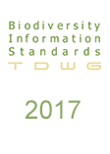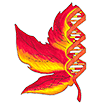In this collection

|
Papers published: 6 Papers in press: 0 Total pages: 15 Printed version: Paperback Unique views: 10153 Total views: 18929 |
With potentially 3-4 billion specimens globally, the world’s natural history collections offer treasure troves of relevant information. This is complemented by a long historic record of citizen science observations, and recently by molecular sampling. New contributions in both these areas are born digital and are accelerating the growth of contemporary biodiversity occurrence data. Meanwhile, efforts such as the NSF’s Advancing Digitization of Biodiversity Collections Program are increasing the rate of digitization of specimen records, filling in our historic biodiversity record just as rapidly. Occurrence records typically contain locality information, and these georeferenced occurrences have revolutionized our ability to model species distributions and project future distributions based on models of climate change. These records may also contain information, such as body size, phenology, environment, that is relevant to ecological and evolutionary research. Even literature sources, where traits measured are not associated with deposited specimens, contain detailed metadata describing location, environment, lifestage and concurrently measured traits. Textual descriptions, from regional floras, catalogs, monographs and other literature, also contain extensive ecological information, suitable for extraction using semantic analysis. This deluge of data is not without its challenges. Among these is the need to develop ontologies, which are crucial for big data solutions, so that trait data can be extracted and assembled informatically. This requires the development of ontologies, which are crucial for big data solutions.
There is an array of existing ontologies in the biodiversity space, many maintained by active communities like the OBO Foundry. Gaps remain in even the most mature ontologies, but as term adoption by outside projects increases, and new tools developed for terms nomination and other community curation activity, it becomes more practical to develop robust structured vocabulary coverage for the biodiversity space.
There is increasing convergence around traits of urgent concern for conservation and applied research. The Essential Biodiversity Variables, identified by GEO BON as essential for monitoring biodiversity change, highlight key traits needed for this stewardship.
In this symposium, we will explore the breadth of sources of biodiversity trait data, and techniques and consensus needed to support analysis over these diverse sources. With over 780 million occurrence records now available via iDigBio and GBIF, and many millions more appearing every year, now is the perfect time to consider which traits are most significant for ecological and evolutionary research, the ontologies required for meaningful communication and data assembly, and the tools needed for ensuring interoperability of these data.

